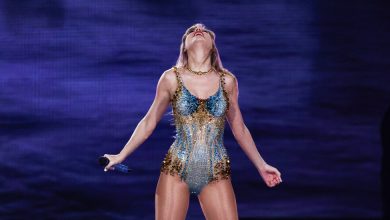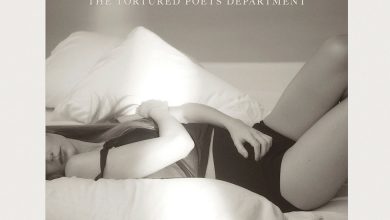5,000 Shows Later, the Grand Ole Opry Is Still the Sound of Nashville

NASHVILLE — The survival of the Grand Ole Opry was anything but guaranteed when Bill Anderson started performing in it six decades ago. Rock ’n’ roll was luring away fans. Radio stations were abandoning barn dance-style programs. There were nights, he said, when musicians could look out from the Opry stage and see empty seats.
But on Saturday night, as the curtain went up and he started singing “Wabash Cannonball,” the house was packed, his music beaming out live on WSM, the Nashville station that has carried the Opry since the fledgling days of radio, and streaming online to viewers around the world.
The show on Saturday was the 5,000th broadcast of the Grand Ole Opry, a constant accompanying American life through generations of turmoil and transformation, through the Depression and recessions, wars, cultural upheaval and, most recently, a pandemic.
The milestone — adding up to roughly 96 years worth of weekly shows, an unparalleled achievement in broadcasting — was a testament to the durability of the Opry as a radio program but also as a Nashville institution that has inducted well over 200 performers as members.
“The Opry is bigger than any one artist,” Anderson, one of the longest-serving members of the Opry cast, said in an interview. “As times change and things evolve, somehow, the Opry has been able to remain the star of the show.”
It was an evolution that was reflected in the two-hour show on Saturday, with an array of performances capturing the shifts and strides in country music that all played out over the past century on the Opry stage.
Throughout the night, there were plenty of nods to the past. But there were just as many contemporary songs, a recognition that nostalgia alone was not enough to sustain the Opry.
The show included staples like Loretta Lynn’s “Coal Miner’s Daughter,” Hank Williams’s “Jambalaya,” and “Can the Circle Be Unbroken,” a song first released in 1935. Anderson joined Jeannie Seely, an Opry member since 1967, in a duet of “When Two Worlds Collide.”
Then, Seely introduced Chris Janson, the singer-songwriter who was inducted in 2018, describing him as the “one we call the family wild child” as he bounded onstage to perform one of his hits, “Buy Me a Boat.”
“It is the show,” said the singer-songwriter Darius Rucker, who performed on Saturday — along with Garth Brooks, Trisha Yearwood and Vince Gill, among others — and was inducted into the Opry in 2012. “I hope it keeps getting more diverse and that people keep coming to see it and that it remains the show in country music.”
As the Opry gained traction, covering a lot of ground with WSM’s 50,000-watt signal and then NBC Radio picking it up nationally in 1939, it emerged as a defining force in country music. The show minted stars and established Nashville as the heart of the industry. (The signs welcoming motorists into Nashville remind them it is the “Home of the Grand Ole Opry.”)
“It appeals to mostly rural hearts,” said Les Leverett, the longtime behind-the-scenes photographer of the Opry.
He recalled his childhood in Perdido, Ala., where his family was “as poor as Job’s turkey,” yet his father scrounged together the money for a radio. Every Saturday night, they would huddle around it, listening to the Opry for as long as the device’s puny battery would allow.
“People all over the country were doing that,” Leverett added. “It just has an attraction. You can’t wait to see who the next entertainer is going to be. It just freezes itself in your mind.”
The Opry has endured as a vital element in the country music ecosystem by being nimble, according to performers, producers and country music historians. The show has balanced an embrace of tradition with striving to appeal to the taste of younger listeners.
“One lyric in one of my favorite songs asks the question: Are you more amazed at how things change or how they stay the same? My answer is both,” said Dan Rogers, the Opry’s executive producer.
“Those black-and-white images of a man sitting down and playing a fiddle,” he added, “have evolved into this show that is about so much more than a man sitting down and playing a fiddle. But if someone came out and played ‘Tennessee Wagoner’ — the song that started the Grand Ole Opry — it will still feel right at home on our stage.”
The Opry had been in danger of becoming encased in amber, a museum piece that was treasured but no longer relevant. For a long spell, particularly in the 1960s and ’70s, it had become “a little hidebound, a little bit stuck in its ways,” said Robert K. Oermann, the country music historian and a longtime contributor to Music Row magazine.
“You listened to the Opry to hear your old favorites,” he added. “To hear the old-timers do their thing.”
But over time, the Opry was reinvigorated, fueled by country music’s resurgent popularity, welcoming new performers and using technology to expand its reach. In 2019, the Opry began broadcasting on Circle, a digital television outlet named for the slice of wooden floor at the center of the Opry House stage, brought over with the move from the Ryman Auditorium, the Opry’s home until 1974.
“We are really trying to put the Grand Ole Opry left, right and center before consumers all across this planet,” said Colin V. Reed, the chairman and chief executive of Ryman Hospitality Properties, which owns the Opry.
The 5,000 tally started with a broadcast on Dec. 26, 1925, when George D. Hay’s “WSM Barn Dance” earned a regular spot on the station’s schedule, just about two months after WSM went on the air.
The show was broadcast every week with few exceptions, like the day of President Franklin D. Roosevelt’s death in 1945 and in 1968, after the assassination of Martin Luther King Jr., when the authorities imposed a curfew in Nashville. In 2010, the stage was submerged in a flood that swept through Nashville, but the show was staged elsewhere while the Opry House was renovated. (In the green room, a waist-high marker indicated how high the water reached.)
Just as the Opry became a reliable presence in the lives of listeners, it offered the same to performers, where they found community in a tough business. “You have this home base,” Anderson said, noting that for itinerant artists always on the road, it was the place where they could hear about good places to eat in Omaha or be warned about a promoter in Ohio writing bad checks.
On Saturday night, the performers were doing two back-to-back shows. Backstage is a maze of dressing rooms, each one with a theme (“Stars and Stripes,” “Honky Tonk Angels”) or named for a longtime Opry performer (Roy Acuff, Little Jimmy Dickens).
Seely stepped out of the dressing room dedicated to Minnie Pearl, the character the comedian Sarah Ophelia Colley Cannon portrayed on the Opry for more than 50 years, and pointed to the long hallway of rooms, calling it “testosterone alley.” Seely preferred the nook where the walls were lined with photographs of women who had been fixtures of the Opry. “I just think it shows the sisterhood as well as it can be shown,” she said.
Later, the Isaacs piled into “Welcome to the Family,” a dressing room set aside for newly inducted members. In recent years, the Opry has added to its ranks, bringing in younger stars like Carly Pearce and Dustin Lynch.
The Isaacs, a family bluegrass gospel group, were certainly not newcomers, having made their debut Opry performance nearly 30 years ago. But they were inducted as members just last month.
“We were engaged, and we got married,” said Becky Isaacs Bowman, joking about the long wait to be inducted.
“We’ve been dating a long, long time,” her sister, Sonya Isaacs Yeary, added.
“This place feels like home,” said Lily Isaacs, the vocalist and matriarch of the group.
Recently, the hallways had been quieter than usual, as coronavirus precautions have led producers to limit who was allowed backstage. But on Saturday, it was more like it used to be.
As Brooks and Yearwood electrified the audience with a medley of their hits, the Isaacs crowded into the singer Vince Gill’s dressing room with their instruments — Sonya had her mandolin, Becky had her guitar and Ben Isaacs had his bass. They played and sang, jamming for their own entertainment until they had to go back onstage for the second show.



